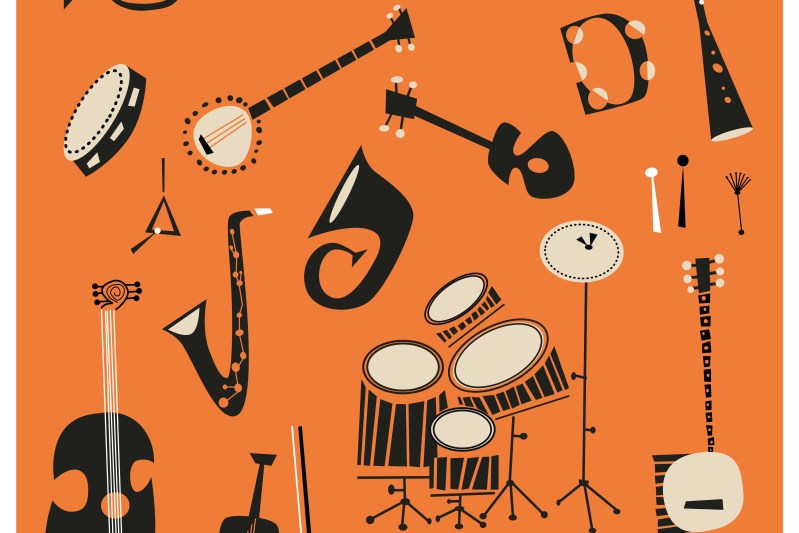
There is a wide variety of avenues for definitive absorption of the emotions music entails. Sometimes, it’s through listening to the lyrics of your favorite vinyl albums, and other times, it’s through being behind the instruments. For most of us, it’s a lot easier to process emotions coming from instruments since lyrics, for the most part, need to be contextualized first. This leads to a desire of wanting to learn musical instruments, as it is like picking up a second language.
Music lessons are great and should always be taken into consideration, when appropriate. In fact, many have moved online and are great resources while we navigate the pandemic while trying to keep our creative juices flowing. But if you’d like to go the DIY route, the internet has got everything you need to at least get you started on the musician front.
While instruments like the trombone and timpani are fantastic in their own right, they’re a bit esoteric in terms of general music. Here, we’ve broken down some easy-to-do routes to getting a handle on three of the most popular and accessible instruments: the piano, drums, and guitar.
Piano

The piano can be intimidating what with its sizable stature and attachment to geniuses like Mozart and Beethoven. Some are so grand they’re like giant pieces of furniture, almost too pretty to play. Look, we don’t expect you to become the next Herbie Hancock. But know that the piano is an inviting instrument and also an umbrella term, in this case, consisting of sibling instruments like the organ, keyboard, glockenspiel, marimba, and more.
If you have a piano or old keyboard, great. If not, a kids’ piano will suffice. And if you’re lacking even that, you can download countless instrument apps, procure attachments for your iPad and favorite music-making software, or simply just dink around with a virtual piano on your laptop. Once you’ve secured your instrument, you’ll need some wisdom. Again, there are lots of sources, and forums like appgrooves do a nice job of rating and categorizing them.
If you wanna really go DIY, simply pull up an image of the basic chords for the piano and use it as your map. Learn a few major and minor chords each day, memorizing them for convenience. Work on simple scales (think middle school band class) to help your dexterity, and then start looking up easy songs to tackle. Outlets like tabnabber allow you access to the tabs of all kinds of music, which will get you on your way to matching notes with figure configuration.
A great organ app for experimenting at home is the Minimoog Model D brought to you by the ongoing legacy of the legendary Bob Moog. It has an assortment of fun settings, great key sensitivity, and solid sound given that you will probably just have it pumping through your phone’s speakers. Plus, it’s fantastically retro and a fun app to bust out when you’re trying to match the melody of a catchy song that happens to be playing.
Drums

If you can drive a stick shift, you’ve already got a head start on being a drummer. Both acts require similar hand-eye and foot-eye coordination. If you can keep a rhythm, you’re even closer.
Like the piano, a full drum set can feel a little daunting. A bass, snare, cymbal set, and a few toms eat up quite a bit of space. And while we encourage you to channel your inner Neil Peart (RIP) and go the whole hog, you may be serviced better by a smaller kit, an electronic setup, or something fully digital. For beat-making, there are some nice and relatively small drum machine options. For sticks-in-hand percussion, you can have a lot of fun with an Octopad setup like this drum set.
Again, if you wanna go very DIY, get a tricked-out digital kit by way of an app. Or, go next level and create your own out of scraps at home. It’s satisfying and a fraction of the cost of the real thing. Again, you’ll need some guidance. Learning the snare drum and some of its basics, like a roll, paradiddle, and the like, is a great way to start. Once you’re ready for the multi-tasking involved on a kit, try some intro beats like these.
And, of course, drum along with your favorite songs and try to match the beat.
Guitar

Musicians are doing some pretty cool things online these days, from intimate performances to guitar lessons. And many of them involve the guitar, a ubiquitous instrument.
You may have one lying around, desperately in need of a tune. Or, perhaps a ukulele or electric bass. Either way, it’s time to learn. If you have an instrument and want to quickly learn some pop songs, outfits like CoachGuitar can get you there. Also, apps like Real Guitar and others are available and iconic names like Fender will have you playing on your phone or tablet, should you need some virtual strings.
For the assembly-minded, there are electric guitar kits out there, too. The internet is full of free advice and that’s especially so with guitar lessons. Test a few out to see what you do or don’t like. If you’re willing to shell out some bucks, go with something like ArtistWorks for a more personalized tutorial.
No matter the instrument, play often, try to replicate what you hear in the wild, and don’t be afraid to botch things often. It takes some getting used to but soon you’ll be dropping a four-on-the-floor beat or strumming along to Free Fallin’ by Tom Petty with ease.


